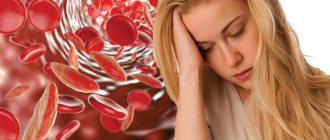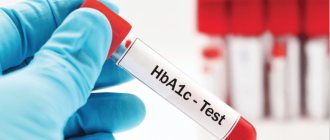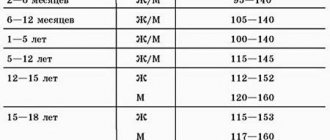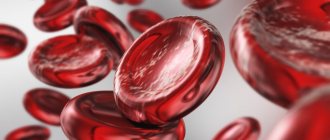Loss of energy, depression, pallor, hair loss and dry skin, palpitations or shortness of breath, drowsiness and irritability are common signs of iron deficiency in the body. How to recognize real anemia and compensate for the deficiency of this microelement?
Iron is necessary for the normal functioning of the body's immune system. If a person suffers from anemia, he often gets sick, experiences weakness, and chronic stress. In addition, a lack of iron can disrupt the menstrual cycle in women and cause problems with potency in the stronger sex.
What to look for in test results and how to take vitamins with iron correctly, said , a general practitioner with 17 years of experience , and head of the Center for the Development of a Healthy Lifestyle .
How to “read” blood tests correctly?
To make sure that the cause of deterioration in health is a lack of iron, you need to take a detailed blood test. Now there are many different laboratories where this can be done.
Article on the topic
Dear, useless, yours. Tests you shouldn't spend money on
Standards may vary. For a man, the norm of hemoglobin is 130-160 g/l of blood, for a woman - 120-140 g/l.
— If a man’s hemoglobin is reduced even slightly, say, to 120-110 g, then this is already a red flag. Even if he does not experience fatigue and has no other symptoms of anemia,” Dobretsova emphasizes, “Reduced hemoglobin may indicate the presence of a polyp, erosion or stomach ulcer. Therefore, you need to go to a gastroenterologist and do a gastrocolonoscopy. There may also be concerns that low hemoglobin is a sign of intestinal or stomach cancer, so this is not something to joke about. With such a result, it is also worth visiting an andrologist.
Women often attribute the lack of hemoglobin to monthly blood loss. But the problem may not only be in the menstrual cycle.
— In a woman, a reduced hemoglobin level may also indicate the presence of polyps, erosion or oncology, so there is no need to delay going to the doctor. Be sure to visit a gastroenterologist and gynecologist, the expert advises.
Well, if a medical examination has ruled out all dangers, reconsider your diet. Get rid of fast food and foods containing dyes and preservatives, eat more lean red meat (beef and lamb) and liver, eat pomegranate, seaweed and pumpkin seeds.
The second important indicator to pay attention to is the mean erythrocyte volume (MCV). Normal MCV is between 80 and 100 femtoliters. If the indicator is reduced (with simultaneously reduced hemoglobin), then most likely the person has iron deficiency anemia. If MCV is normal with reduced hemoglobin, this indicates incipient iron deficiency anemia. It can also signal a chronic disease, such as kidney disease. An elevated MCV is often a sign of a lack of folic acid or vitamin B12.
Yes - to meat, no - to tea. How to deal with anemia? More details
What is the norm for hemoglobin
As is already known, the protein is found in red blood cells and is responsible for the transport of oxygen in the body.
To maintain a normal level of health, eliminate fatigue, malaise and other characteristic signs of low hemoglobin, it is recommended to regularly take a blood test to determine protein.
The hemoglobin level is different for everyone, depending on age, gender and physiological characteristics of the body. So, for men this figure is 125-160 g/l, for women 115-140 g/l. In newborn babies, the protein level is in the range of 140-195 g/l; for children one year of age, hemoglobin is 110 g/l. And at school age, the blood protein level is at least 150 g/l.
In women, during pregnancy, hemoglobin drops and this is considered normal. At this time its value is about 110 g/l.
As a rule, a low rate is associated with iron deficiency anemia, which occurs in most people, regardless of age and gender.
What else is worth checking?
Ferritin. This is a protein complex that shows the level of iron reserves in the body; it is responsible for both the storage and release of iron.
- The optimal ferritin range is 50-80 nanograms per milliliter. The figure usually roughly corresponds to our weight,” says Dobretsova. — If the indicator fluctuates between 30-40, then this is a reason for concern, even with a normal hemoglobin level. This indicator is especially recommended for those who take anti-inflammatory or painkillers for persistent headaches, back pain and others. The fact is that these medications can cause erosion of the mucous membrane of the stomach and intestines and, accordingly, bleeding. Taking antacids (Maalox, for example) can affect the absorption of iron, so such patients should also undergo such testing regularly. Vegetarians, people with frequent bleeding, and those taking blood-thinning medications are also at risk. All of them need to donate blood for this indicator, even in the absence of symptoms of anemia.
Excess ferritin is also dangerous - especially with liver diseases, diabetes, and cardiovascular diseases. When there is a lot of ferritin, the vessels harden and become fragile. This means that the aging of the body accelerates.
Article on the topic
Iron in the blood. 10 foods that will increase hemoglobin in winter
What is hemoglobin
Hemoglobin is a complex protein containing iron. Its main task is to add oxygen diffusing into the blood from the lungs and distribute it throughout the body. Giving oxygen to cells, hemoglobin attaches carbon dioxide formed by them in the process of vital activity. Then getting through the bloodstream to the lungs, it gives it away, again making room for oxygen. This is how gas exchange and tissue respiration occur. But, in addition, hemoglobin is involved in maintaining the acid-base balance, in DNA synthesis, and in the occurrence of a number of redox reactions.
To synthesize hemoglobin, the body uses iron, which comes from food and accumulates in the form of ferritin in the liver, lungs, and spleen. There is also a small amount of iron present in the intestinal mucosa. If the diet does not meet the body's iron needs, ferritin is activated. This helps maintain normal hemoglobin levels and organ function. But with prolonged deficiency, its reserves are depleted, and the concentration of hemoglobin decreases.
In men, critically low hemoglobin levels are rare, since they, unlike women, do not experience regular physiological bleeding. For the same reason, the increase in hemoglobin in men occurs faster and more effectively. But if left untreated, there is a serious risk of complications, especially if you have bad habits:
- thrombosis;
- myocardial infarction;
- stroke;
- decreased immunity;
- deterioration of cognitive functions (memory, attention);
- hypoxic coma.
Often, when low hemoglobin persists for a long time, the presence of chronic fatigue syndrome is observed.
How to compensate for iron deficiency?
A doctor should prescribe iron supplements; you should not buy them yourself at the pharmacy. “It is important to strictly follow the doctor’s recommendations. Hemoglobin and ferritin reserves are replenished slowly, up to 6 months, explains Irina Dobretsova. “Therefore, you should not stop taking medications before the end of the course or reduce the dose, even if you feel better. Sometimes, when taking iron supplements, there are side effects, such as belching and bloating. Then you can switch to intravenous administration of the drug, depending on the severity of the situation and the degree of intolerance.”
It is important to remember that preparations containing iron cannot be combined with dairy products. Calcium makes it difficult to absorb iron. It is also undesirable to drink iron supplements with black tea. But orange juice will give excellent results: vitamin C, on the contrary, helps iron absorption.
Reasons for decreased hemoglobin levels
The main reasons for a decrease in hemoglobin levels in the blood in men are:
- reduction in the amount of iron entering the body;
- disturbances in the absorption and transport of iron throughout the body;
- a decrease in the number of red blood cells as a result of a violation of their production by the bone marrow or a shortening of life due to various circumstances.
In this case, most often a decrease in hemoglobin is due to iron deficiency in the body. The fact is that the absorption of this microelement from food is limited. Even with proper nutrition, no more than 1-1.5 mg can be absorbed per day, and if there are errors in the diet, the amount of iron entering the body cannot cover the need for it. In such cases, iron depots in the form of ferritin are used to maintain normal life functions. But its reserves are limited, and therefore, when they are depleted, the intensity of bone marrow erythropoiesis decreases. As a result, the number of red blood cells, as well as the level of hemoglobin, decrease, which indicates the development of anemia and is accompanied by the appearance of characteristic symptoms.
Thus, the causes of low hemoglobin in men can be:
- malnutrition;
- insufficient consumption of foods that are sources of iron:
- adherence to a vegetarian diet;
- diseases of the gastrointestinal tract;
- severe bleeding during injuries, operations, including hidden ones (observed with peptic ulcers of the stomach and duodenum, kidney pathologies, pulmonary siderosis, etc.);
- haemorrhoids;
- malignant tumors;
- chronic intoxication;
- vasculitis;
- systemic scleroderma;
- systemic lupus erythematosus;
- helminthiasis;
- cystic fibrosis;
- rheumatoid arthritis, etc.
Statistics show that men are more likely than women to have gastrointestinal diseases caused by Helicobacter pillory, which leads to impaired absorption of iron in the intestines and a decrease in hemoglobin.
Who is at risk of iron deficiency or anemia?
- Pregnant women, unless taking special multivitamins
- Breastfed infants if the mother was anemic during pregnancy or while breastfeeding
- Babies whose diet was introduced to pureed meat too late (this is usually recommended from 6 months of age)
- Children who actively engage in sports and do not take additional vitamin and mineral complexes
- Teenagers during hormonal changes in the body
- Vegetarians
- Fans of strict diets and fasting.
Symptoms
The severity of symptoms largely depends on the level of hemoglobin: the lower it is, the more severe the anemia. Therefore, in mild cases, men may not notice changes in their well-being or not attach importance to them, since they are little expressed. In such situations, periodic weakness or increased fatigue may occur, but many attribute this to stress, age and other life circumstances. With a further decrease in hemoglobin, the situation becomes more complicated, the existing symptoms become more intense, and others appear.
Sometimes even a decrease in hemoglobin to 90 g/l is asymptomatic.
In general, a decrease in hemoglobin levels in men may appear:
- drowsiness, weakness, decreased performance;
- shortness of breath, which initially occurs due to physical exertion;
- feeling of heartbeat;
- dizziness that can lead to loss of consciousness;
- pallor of the skin and mucous membranes;
- increased irritability, aggressiveness;
- headaches of varying degrees of intensity;
- decreased appetite;
- increased brittleness of nails, the appearance of white spots and bumps on them;
- perversion of taste preferences with the emergence of a desire to eat inedible food, in particular raw meat, chalk, clay;
- developing an addiction to the smells of acetone, gasoline, perfume, etc.;
- ringing in the ears, flickering of spots before the eyes.
A symptom of decreased hemoglobin that is typical for men may be impaired erectile function.
What level of hemoglobin is considered elevated?
It would seem: if hemoglobin is so important for health, then increased hemoglobin in men should be a good sign. However, it is not. Too high hemoglobin in men signals health problems and can itself cause trouble.
An increase in hemoglobin levels in men by 20 g/l or more is considered a significant deviation from the norm . High hemoglobin in men can be a consequence of heart or pulmonary failure, intestinal obstruction, cancer, or diabetes. Low hemoglobin in men is also observed with dehydration, which can be caused by both insufficient fluid intake and too rapid loss of fluid due to vomiting or diarrhea.
Increased hemoglobin in men makes itself felt with symptoms such as
- loss of appetite up to anorexia,
- weakness and fatigue,
- deterioration of vision and hearing,
- muscle and joint pain.
Some have
- problems with the genitourinary area,
- digestive disorders,
- insomnia,
- dizziness.
High hemoglobin in men is more dangerous than many people think. With an increased hemoglobin content, the blood thickens and moves through the veins with difficulty, which can lead to the formation of blood clots, which can cause a stroke.
Since hemoglobin never increases without reason, it is necessary first to identify the underlying disease and begin treatment. While doctors get to the root of the problem, the patient himself can improve the situation somewhat and reduce the level of hemoglobin. To do this, you need to avoid foods high in iron.
- red meat,
- offal,
- beans,
- eggs,
as well as from fatty and fried foods - such unhealthy foods increase cholesterol, and the risk of blood clots increases.
Diagnostics
If the symptoms described above appear, especially if this is accompanied by the presence of factors predisposing to a decrease in hemoglobin, you should take a general blood test and consult a physician with its results. To confirm anemia, a repeat clinical blood test is usually prescribed. This eliminates the possibility of mistakes being made in the laboratory.
If a decrease in hemoglobin levels is confirmed, treatment for anemia is immediately prescribed. And in parallel with this, a comprehensive examination of the body is carried out in order to identify the causes of its development. This is especially important in cases where there are no obvious prerequisites for this, for example, having undergone surgery in the recent past, injuries with large blood loss, etc. For this, the following may be prescribed:
- blood chemistry;
- stool test for occult blood;
- colonoscopy;
- fibrogastroduodenoscopy;
- Ultrasound of the abdominal organs and kidneys.











